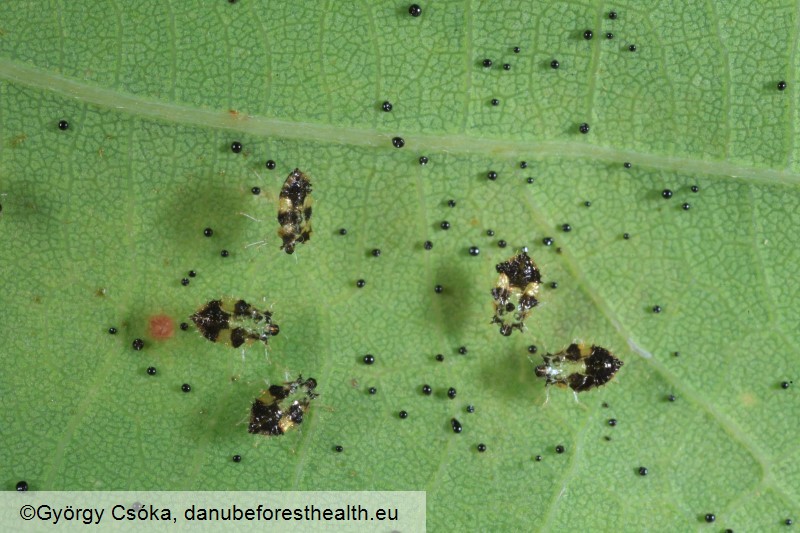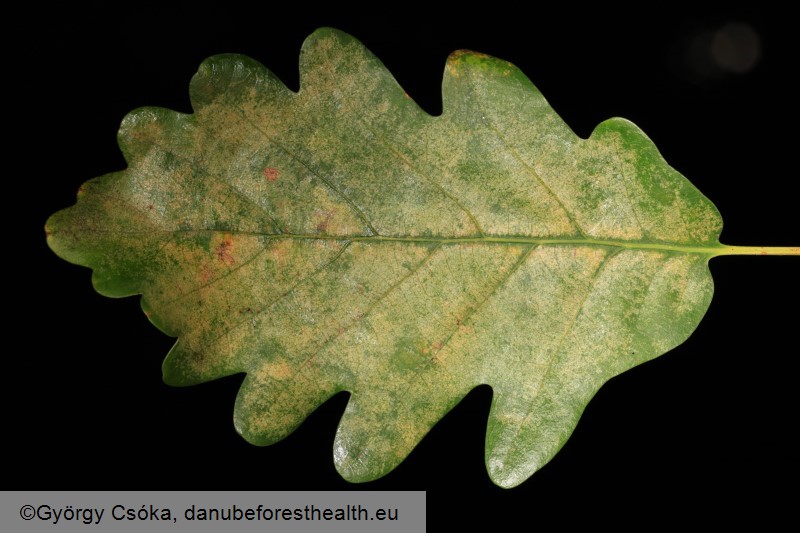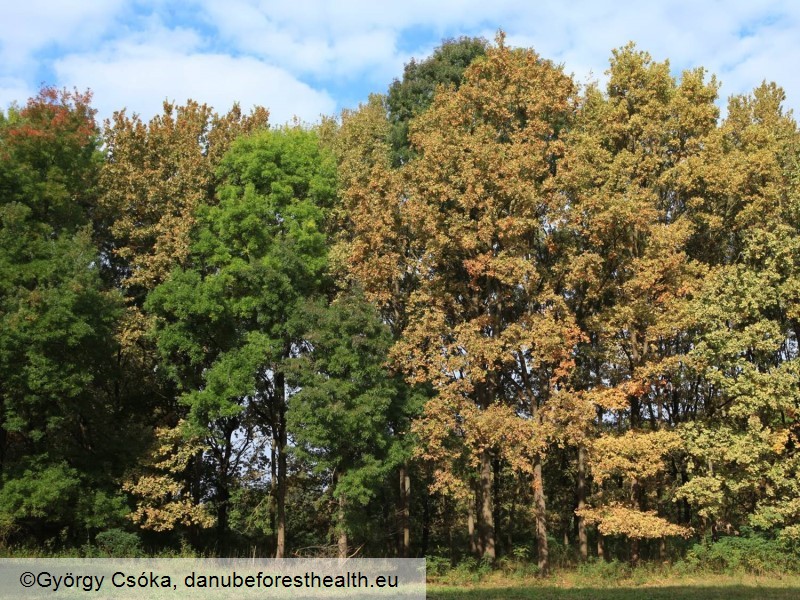Animalia
Oak lacebug
Corythucha arcuata
Maarten de Groot
|
|

Fig. 1. Adult of Corytucha arcuata

Fig. 2. Eggs of Corytucha arcuata

Fig. 3. Nymph of Corytucha arcuata

Fig. 4. Damage on leaf cause by Corytucha arcuata

Fig. 5. Damage on the canopy of oak trees cause by Corytucha arcuata. The green trees are ash trees
DETECTION PERIOD:
April to September
DESCRIPTION:
The adult is square-shaped (3 mm long and 1 mm wide) and cream colored. The body is dorsiventrally flattened. It has transparent wings with lace texture and brown or black spots. The larvae are grey to black, their body is covered with numerous small spines. The oak lacebug appears in groups on oaks, on the underside of leaves, from which it sucks juice. They hibernate as adult, hiding in the cracks of the bark of the tree.
HABITAT:
On oaks in natural habitats, nurseries, plantations and urban areas.
STATUS:
The species occurs in most of the Refocus study area. It was found in Croatia, Hungary, Serbia and Slovenia. It has not yet been reported in Austria. Severe outbreaks were observed in Croatia, Serbia and Hungary, while in Slovenia the population seems to be relatively small.
IMPACT:
The oak lace feeds on oak leaves, which reduces the photosynthetic ability of the leaves. The affected leaves fade, dry, and fall off early. Injuries are caused by larvae and adults. The oaks in Europe are important forest and ornamental plants. Leaf injuries have a negative impact on the aesthetic appearance in urban environments and, with extensive outbreaks, they might lead to reduced growth and weakening of the trees. In the case of young plants, the whole plant may die due to injuries.
SIMILAR SPECIES:
The plane lacebug (Corythucha ciliata) is very similar. Plane lace bug is whiter and has smaller brown spots on the wings. The main difference is that oak lace is usually found on oak trees and the plane lacebug on plane (Platanus sp).
|